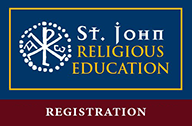Bulletins
September 18, 2016
Download the Bulletin as a PDFLabor Day has come and gone. My brain is no longer clogged with sea water but my eyes do seem to be older. You might see me wear my readers more often. No matter. Summer is over.
Let’s get back to work.
Do you remember that series of articles on the sign of peace, its history and its meaning? We were leaning heavily on the famous work of Rev. Josef A. Jungmann called The Mass of the Roman Rite: Its Origins and Development.
Not only has he taught us about the sign of peace, or more properly the ‘Kiss of Peace”, as it occurs in the Roman Rite but also in other Catholic liturgical rituals, be they proper to a religious order such as the Dominican Rite or other Catholic Churches such as Maronites.
Remember that Father Jungmann was writing in the decades leading up to the Second Vatican Council. And so we arrive at his description of the “current” state of affairs.
Today the kiss of peace is preceded not only by the Pax Domini (“May the peace of the Lord be with you always” said by the priest audibly to the faithful), but by a special prayer for peace which, however is separated from the [Pax Domini] by the commingling formula (“May this mingling of the Body and Blood of Our Lord Jesus Christ bring us who receive it into eternal life” said silently by the priest as he drops a particle of the Sacred Host into the Precious Blood) and by the Agnus Dei (which we always pray in Latin so much so that one of our families this summer on vacation encountered the Lamb of God chant at another parish and the children did not recognize the prayer), which is now also said by the priest. Even as late as the ninth century the Carolingian source documents present the kiss of peace as given right after the Pax Domini. Frequently the Agnus Dei was still only sung by the choir without being said by the priest, and therefore did not form any interruption before the kiss.
That special prayer for peace mentioned above is
“Lord Jesus Christ, who said to your apostles ‘Peace I leave you my peace I give you’ look not on our sins but on the faith of your Church and graciously grant her peace and unity in accordance with your will, who live and reign for ever and ever. Amen.”
That prayer remains to this day obligatory in the Extraordinary Form of the Mass. The priest prays it quietly immediately after the Agnus Dei. At the Solemn High Mass he and the deacon both pray it quietly before exchanging the Sign of Peace with each other. In the Ordinary Form of the Mass you hear the priest pray this aloud right after the Our Father but before Pax Domini and before the comingling. So far so good?
May the peace of the Lord be with you always!
Fr. Christopher J. Pollard



